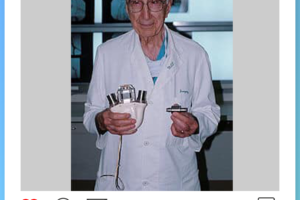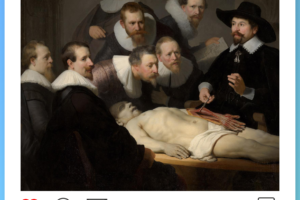
Einstein’s Aortic Aneurysm: The Unfolding Medical Odyssey
Introduction: In the twilight of his extraordinary life, Albert Einstein encountered an unexpected adversary—a silent but menacing abdominal pain that would lead to a profound medical journey. At the age of 69, the iconic physicist faced the diagnosis of Abdominal Aortic Aneurysm (AAA), setting the stage for a groundbreaking surgical intervention. Let’s embark on the narrative of Einstein’s medical odyssey, marked by pain, innovation, and the delicate dance with a relentless aneurysm.
Subtitle: “A Battle Beyond Equations: Einstein’s Encounter with AAA”
Onset of Abdominal Pain: In 1948, at the age of 69, Albert Einstein found himself entangled in the grip of abdominal pain, an ailment that would soon be identified as Abdominal Aortic Aneurysm (AAA). The man known for unraveling the secrets of the universe was now confronted with a formidable challenge within his own body.
A Pioneering Surgical Intervention: Facing the complexity of Einstein’s condition, medical professionals opted for a pioneering technique—his AAA was wrapped with cellophane. This innovative approach reflected the spirit of medical exploration at the time and showcased the marriage of scientific prowess with surgical innovation.
A Respite in Silence: Following the intervention, Einstein experienced a period of respite, remaining asymptomatic for several years. The cellophane-wrapped AAA seemed to have offered a temporary reprieve, allowing the physicist to continue his pursuits in science and academia.
The Return of Pain: The tranquility, however, was short-lived. In 1955, the familiar pain returned, signaling a resurgence of the aneurysm’s threat. Einstein, now 76, found himself once again in the clutches of abdominal discomfort, foreshadowing the culmination of his medical journey.
A Tragic End: On April 18, 1955, the world bid farewell to Albert Einstein as the aneurysm ruptured, leading to his untimely demise. The man whose intellect had reshaped our understanding of the cosmos succumbed to the relentless force of a ruptured aneurysm.
Legacy in Medical Innovation: Einstein’s medical odyssey, while marked by tragedy, left an indelible mark on the field of surgery. The cellophane-wrapping technique, though ultimately unable to provide a lasting solution, represented a bold step into the realm of experimental surgical approaches.
Conclusion: Albert Einstein’s journey, from the pinnacle of intellectual pursuits to the quiet battle against abdominal pain, reflects the universality of the human experience. His encounter with AAA not only underscores the fragility of even the most brilliant minds but also serves as a poignant chapter in the ever-evolving history of medical science. As we reflect on Einstein’s aortic odyssey, we are reminded that even the luminaries among us are not immune to the intricate dance between life, innovation, and the relentless march of time.



